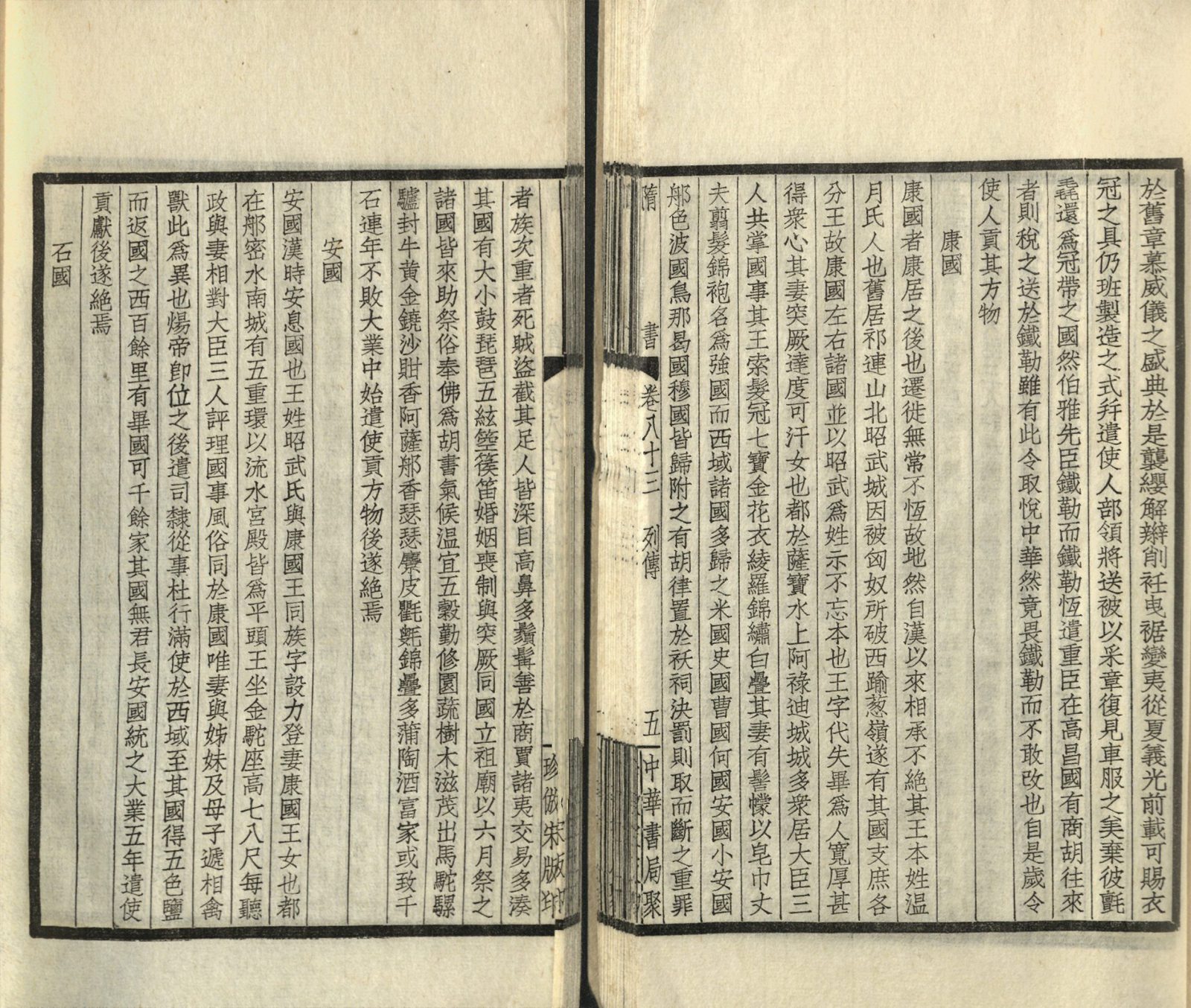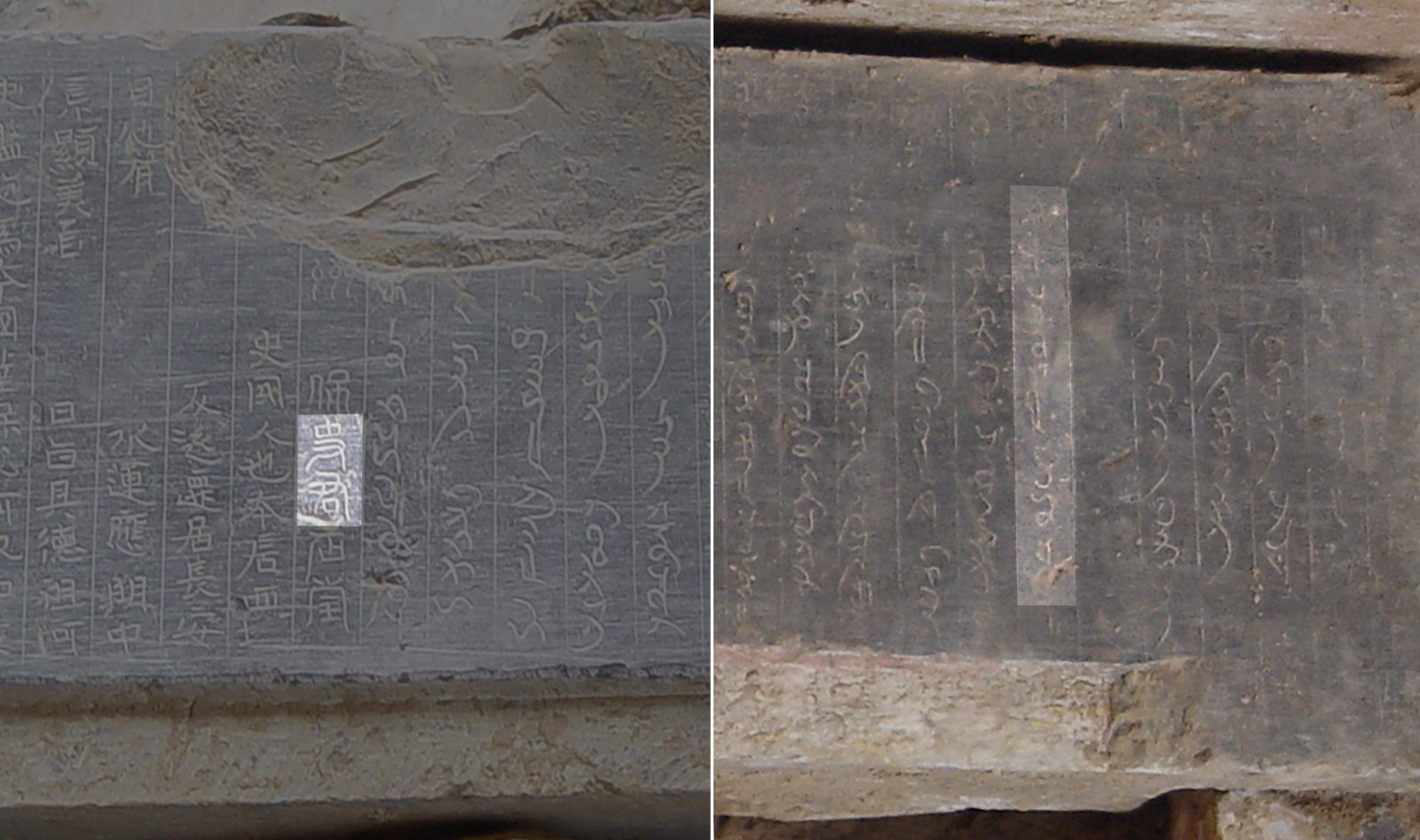The Nine Sogdian Surnames
by Julie Bellemare
The surnames of known Sogdians living in China are often linked to specific Sogdian cities where they or their ancestors originated. For example, Shi Jun’s last name, Shi 史, indicates that his ancestors emigrated from Kesh (modern Shahr-i Sabz, about eighty kilometers south of Samarkand), while An Qie’s, An 安, connects his family to Bukhara . Such surnames also include Kang 康 (Samarkand ); Shi 石 (Chach, modern Tashkent ); Cao 曹 (Kabudhan, north of the Zerafshan River ); He 何 (Kushaniya, northwest of Samarkand ); Mi 米 (Maymurgh, the area around Panjikent , sixty kilometers east of Samarkand); and a few others. Collectively they are best known as the “nine surnames of Zhaowu” (Zhaowu jiuxing 昭武九姓), since the Chinese believed that Sogdians originally made their base at Zhaowu 昭武 or Guzang 姑臧 in the Hexi Corridor (Hexi Zoulang 河西走廊, in Gansu Province). In reality, however, they came from much farther west.
Sogdians were not the only foreigners given names according to their place of origin; for instance, those from India were often surnamed Zhu 竺. Lists of Sogdian surnames appear in several Chinese texts of the period, notably in the Sui Shu 隋書 [Book of Sui] and the Xin Tang Shu 新唐書 [New Book of Tang]; Fig. 1. However, these texts not only present slightly different lists, but the names do not always add up to nine.
As Yutaka Yoshida has found, no standard list of nine Sogdian names has been established in Chinese sources. He proposes that the set number of nine names came to be the norm because in Chinese, “nine” (jiu 九) is sometimes used to mean “numerous.” The Chinese may have thought of Sogdian émigrés as coming from a great number of towns in the “Western Regions,” their designation for the lands to the west, such as Sogdiana. Therefore, the Chinese use of a set of surnames for people of Sogdian origin did not reflect naming practices in Sogdiana itself. Nevertheless, once a surname was attributed to a Sogdian family residing in China, it was passed on to the following generations. Recently excavated tombs of such a family contained epitaphs showing that the surname Shi 史 was passed on for at least seven generations Fig. 2, while Sogdian given names were used for only the first four generations of sons.
Fig. 2 Detail from bilingual epitaph for tomb of Shi Jun (Wirkak) and Wiyusi: Shi Jun’s memorial bears both his Chinese (left) and Sogdian (right) names. (Names highlighted in image for clarity.) China, Xi’an 西安市, Shaanxi Province 陝西省. Northern Zhou dynasty (557–581 CE); dated to 579–80 CE. Stone carvings with traces of pigment and gilding. Shaanxi History Museum, Xi’an, China. View object page
Image courtesy of Shaanxi Provincial Institute of Archaeology.
This indicates that for at least several generations, descendants of Sogdians who settled in China maintained some personal connection to their homeland, despite the gradual adoption of Chinese personal names and other markers of Chinese identity.
Yoshida, Yutaka. “On the Origin of the Sogdian Surname Zhaowu 昭武 and Related Problems,” Journal Asiatique 291, nos. 1–2 (2003): 35–67.
Luo Feng 羅丰, Guyuan nanjiao Sui Tang mudi 固原南郊隋唐墓地 [Sui and Tang-dynasty cemeteries in the southern suburbs of Guyuan] (Beijing: Wenwu chubanshe 1996).

Two pages from the Sui Shu 隋書 [Book of Sui] discussing several “Western Kingdoms,” such as Samarkand and Bukhara, and their reflections in surnames of Sogdians living in China.
After Wei Zheng 魏徵 (580–643 CE), Sui Shu 隋書 (Shanghai: Zhonghua shu ju, 1936), v. 12, juan 83, 5a–b.

Detail from bilingual epitaph for tomb of Shi Jun (Wirkak) and Wiyusi: Shi Jun’s memorial bears both his Chinese (left) and Sogdian (right) names. (Names highlighted in image for clarity.) China, Xi’an 西安市, Shaanxi Province 陝西省. Northern Zhou dynasty (557–581 CE); dated to 579–80 CE. Stone carvings with traces of pigment and gilding. Shaanxi History Museum, Xi’an, China.
Image courtesy of Shaanxi Provincial Institute of Archaeology.